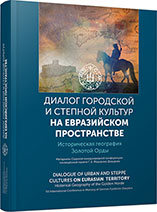Адыгская керамика золотоордынского времени в фондах Государственного музея Востока
The Adygeyan Pottery of the Golden Horde Period from the Collections of the State Museum of Oriental Art (Moscow)
Author(s): Ludmila M. Noskova
Subject(s): History, Archaeology, Middle Ages, 13th to 14th Centuries, 15th Century
Published by: Издательский дом Stratum, Университет «Высшая антропологическая школа»
Keywords: North-Eastern Black Sea region; Adygeya; the Golden Horde period; 14th—15th centuries; cemetery; kurgan; ceramics;pottery;
Summary/Abstract: The paper discusses a small collection of 14th—15th-century ceramics from the excavations by the Caucasian archaeological expedition of the State Museum of Oriental Art in Adygeya and the Eastern Black Sea coast of the Caucasus is discussed. Most of the pottery comes from the Shendjiy kurgan cemetery (Adygea) and late medieval burial ground in the village of Kabardinka (near Gelendzhik). Several of the vessels were found on the banks of the Krasnodar Reservoir, where the late medieval funerary sites are situated. The material is divided into two groups: those from the left bank of the Kuban River and from the Black Sea region. The vessels are represented in different forms of jugs and mugs predominantly. All the vessels are made of red clay, which is typical for the Adygeyan ceramics of the Golden Horde period, and are produced on slow rotation potter’s wheel. Most of the jars of the second group have a side drain — a rim in the shape of oenochoe (“towards yourself”), which is a typical feature of the vessels from the Black Sea region. These forms of vessels disappear in the left-bank Kuban region. At the same time, the jugs with tubular drain appear in the ceramic complexes as metal jugs imitations. In general, the ceramic forms represented in the collections of the Museum of the Oriental Art complement the main types of kitchenware, common in the North-Western Caucasus in the 14th—15th centuries.
Book: Диалог городской и степной культур на Евразийском пространстве. Историческая география Золотой Орды
- Page Range: 238-241
- Page Count: 4
- Publication Year: 2016
- Language: Russian
- Content File-PDF

